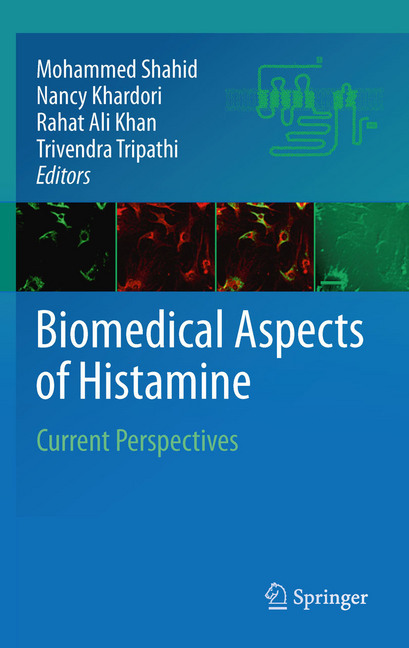Shahid, Mohammed (Hrsg.)
Khardori, Nancy (Hrsg.)
Khan, Rahat Ali (Hrsg.)
Tripathi, Trivendra (Hrsg.)
Biomedical Aspects of Histamine
Current Perspectives

Beschreibung
Since its identification by Sir Henry Dale a century ago, histamine has become one of the most important multifunctional biogenic amines in the field of biomedicine. The pharmacologic effects of histamine are mediated through four types of membrane histamine receptors; H1R, H2R, H3R and H4R, which are all heptahelical G-protein-coupled receptors. It has been known to play the broadest spectrum of activities in various physiological and pathological conditions including cell proliferation, differentiation, hematopoiesis, embryonic development, regeneration, wound healing, aminergic neurotransmission and numerous brain functions, secretion of pituitary hormones, regulation of gastrointestinal and circulatory functions, cardiovascular system, as well as inflammatory reactions, modulation of the immune response, endocrine function and homeostasis, and other important areas.
Produktdetails
| ISBN/GTIN | 978-90-481-9349-3 |
|---|---|
| Seitenzahl | 441 S. |
| Kopierschutz | mit Wasserzeichen |
| Dateigröße | 7584 Kbytes |

